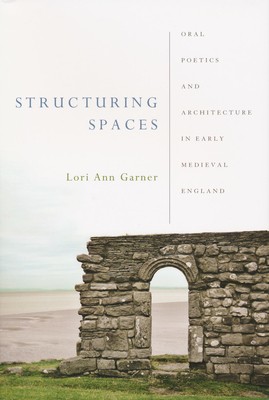
- We will send in 10–14 business days.
- Author: Lori Ann Garner
- Publisher: University of Notre Dame Press
- ISBN-10: 0268029806
- ISBN-13: 9780268029807
- Format: 15.2 x 22.9 x 2.3 cm, minkšti viršeliai
- Language: English
- SAVE -10% with code: EXTRA
Reviews
Description
In Structuring Spaces: Oral Poetics and Architecture in Early Medieval England, Lori Ann Garner illuminates the idiomatic and traditional meanings invested in depictions of architecture within the vernacular verse of early medieval England, portrayals that consistently demonstrate a shared aesthetic between literary texts and physical buildings. Through systematic exploration of the period's verbal and material culture as complementary art forms, Garner argues that in Anglo-Saxon England the arts of poetry and building emerged from the same cultural matrix. Not only did Anglo-Saxon builders and poets draw demonstrably from many of the same traditionally encoded motifs and images, but so rhetorically powerful was the period's architectural poetics that its expressive force continued in literature and architecture produced long after the Norman Conquest.
Far from conceiving this inherited tradition as monolithic in nature, Structuring Spaces foregrounds the complex interface of orality and literacy as a nexus of varied and multivalent cultural traditions that influenced the production of texts and buildings alike. After establishing a model of architectural poetics based on oral theory and vernacular architecture, Garner explores fictionalized buildings in such works as Beowulf and the Ruin, architectural representation in Old English adaptations of Greek and Latin works, uses of architectural metaphor, and themes of buildings in Anglo-Saxon maxims, riddles, elegies, hagiographies, and charms. Her book draws on scholarship from art history, archaeology, anthropology, and architecture, as well as the great wealth of studies addressing the literature itself.
EXTRA 10 % discount with code: EXTRA
The promotion ends in 23d.07:56:37
The discount code is valid when purchasing from 10 €. Discounts do not stack.
- Author: Lori Ann Garner
- Publisher: University of Notre Dame Press
- ISBN-10: 0268029806
- ISBN-13: 9780268029807
- Format: 15.2 x 22.9 x 2.3 cm, minkšti viršeliai
- Language: English English
In Structuring Spaces: Oral Poetics and Architecture in Early Medieval England, Lori Ann Garner illuminates the idiomatic and traditional meanings invested in depictions of architecture within the vernacular verse of early medieval England, portrayals that consistently demonstrate a shared aesthetic between literary texts and physical buildings. Through systematic exploration of the period's verbal and material culture as complementary art forms, Garner argues that in Anglo-Saxon England the arts of poetry and building emerged from the same cultural matrix. Not only did Anglo-Saxon builders and poets draw demonstrably from many of the same traditionally encoded motifs and images, but so rhetorically powerful was the period's architectural poetics that its expressive force continued in literature and architecture produced long after the Norman Conquest.
Far from conceiving this inherited tradition as monolithic in nature, Structuring Spaces foregrounds the complex interface of orality and literacy as a nexus of varied and multivalent cultural traditions that influenced the production of texts and buildings alike. After establishing a model of architectural poetics based on oral theory and vernacular architecture, Garner explores fictionalized buildings in such works as Beowulf and the Ruin, architectural representation in Old English adaptations of Greek and Latin works, uses of architectural metaphor, and themes of buildings in Anglo-Saxon maxims, riddles, elegies, hagiographies, and charms. Her book draws on scholarship from art history, archaeology, anthropology, and architecture, as well as the great wealth of studies addressing the literature itself.


Reviews